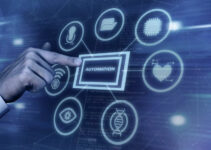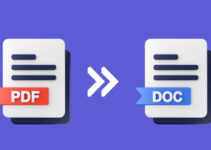You’re not alone if you’ve always been curious about all the buttons, lights, ports, and other weird things on the front and back sides of your CPU casing.
We’ve all been there. Buying (or building) our first PC and then getting confused about all these ports, how to use them, which plug goes where, and how to connect new items to your PC.
Whether you just bought a brand new PC or are only curious, this article will guide you through everything you need to know about your CPU panels.
This guide covers the front panel of CPU with labels and the back panel.
If you ever feel lost about connecting any component to your PC, you can always refer back to this guide.
Note: Your CPU casing and the ones shown in this guide will differ in design, component placement, and the number of components. There’s nothing to fear. The basics remain the same.
If you’re assembling a new PC and are not experienced, it’s in your best interest to go to an expert technician.
Okay, enough talking.
Let’s start exploring your CPU panels!
Front Panel of CPU with Label
This is the front-facing side of your CPU. In other words, when you turn your PC on, this is the side you use.
All the must-have components are in the front panel to save you the hassle of repeatedly going to the back side of your PC.
The most common components on your CPU Front Panel are the following

- Power button(duh!)
- Restart button
- USB ports
- Headphone port
- Microphone port
- Optical drive
- Lights
Now it’s time to know some details of what each port is used for.
Power Button
This button is used to turn on your PC. Usually, the button is pushed and held for a second or two.
For easier recognition, the Power button is often bigger in size. It also contains the power logo.
Restart button

This is the “life saver” button. What do I mean by that?
If, for some reason, your PC gets stuck, hangs up on you, and nothing works(oof!), then pressing this button will reboot your PC.
Remember, though, that you should NEVER abuse this button. Only keep it for emergencies where your device freezes after a serious crash.
USB Ports

USB stands for Universal Serial Bus. You’ll find a common port on your PC’s front and back panels. It’s rectangular shaped and small in size.
USB allows you to connect many peripherals that support a USB connection. These include
- Flash drives
- External hard drives
- Mouse
- Keyboard
- Headset
- Joystick
There are various types of USBs and different versions, as shown in the picture. The most common versions in modern PCs are USB 2.0 and 3.0
Headphone/Speaker Port

It is commonly known as a 3.5 mm headphone jack. You can also find this port on your phone.
The port is green in color and contains a headphone logo. If your headphone has a single jack, it goes into this port. However, if your headphone has two jacks, the green one goes into this port.
It also goes into this port if you want to use a speaker instead of headphones.
Microphone Port

Another 3.5 mm port. This is where you plug in your microphone. The port is pink in color and contains a microphone logo.
The pink wire goes into this port if you’re using a headset with two wires.
Optical Drive
The wide rectangular-shaped slot with a button beneath. This is the Optical Drive.
Upon pressing the button, a tray will come out. Position your CD/DVD properly on the tray and press the button again. The tray will go back inside. Your PC will start reading from it if the CD/DVD is not corrupted.
Lights

There are a bunch of lights that work as indicators.
For example, when you turn on your PC, a light gets litten. It stays litten until your turn your PC off.
If the light is blinking, the reason could be that your PC has entered hibernation or suspended mode.
Another common light in the front panel is the CD/DVD drive light. It’s an LED light. When you enter a CD/DVD, the light stays litten until you decide to get it out.
On some occasions, the light may blink. This may happen when you’ve pressed the button to open the Optical Drive tray.
In many modern casings, there are some extra ports or slots other than the ports we’ve mentioned above. They are not as much used as the common ports.
If your CPU has them, it’s good to learn about them so that you can use these ports if you need to. Here are some of the not-so-common ports you’ll find on your CPU
- Floppy Drive
- USB Type-C
- SD
- TF/MicroSD
- CF
- MMC/MS
- Power Output
- SATA
- eSATA

Floppy Drive
Back then, when floppy drives were the de facto portable storage, this port was used to enter the floppy discs.
USB Type-C
This is where your Type-C cable goes in. Usually, this port is used for connecting mobile devices.
SD

SD(Secure Digital) cards are popular portable media storage with phones and digital cameras. If you have one of those cards that you want to connect to your PC, it goes into this port.
TF/MicroSD

Your TF(TransFlash) or MicroSD memory cards go in this slot. You find these cards in digital cameras, mobile phones, or old gadgets.
CF

If you own a CF (CompactFlash) card, this is the slot to use it.
MMC/MS

MMC (Multi Media Card) cards go into these slots. You could try entering the card into your SD slot if you don’t have an MMC slot.
These cards are used with audio players, cameras, and PDAs.
SATA

SATA stands for Serial AT Attachment. This port connects mass storage devices like HDDs, Optical Drives, and SSDs.
eSATA

External SATA. It’s used for external connectivity. The only difference with an ordinary SATA is in nitty-gritty details such as length, amplitude, and connector position.
CPU Back Panel
Now that we covered the front panel, it’s time to move to the back panel of your PC.
Any buttons, ports, or slots you find on the back side of your PC belong to your motherboard. In other words, the back panel of your CPU solely depends on the motherboard you’re using.
Many of the ports in the back panel overlap with the ones we’ve seen in the front panel, so we won’t mention them in this section. The only back panel parts we will cover are the ones exclusive to the back panel.
That being said, let’s have a look at the common ports, slots, and components at the back panel of your PC

- Power Supply Section
- P/S2 Port
- S/PDIF Port
- Serial Port
- Parallel Port
- Ethernet Port
- Analog Audio Ports
- VGA Port
- DVI Port
- HDMI Port
- Fans
Power Supply Section

The power supply component of your PC is placed at this position on the Back Panel. The power cable that will connect your PC with the main power line of your house goes into this port.
The red switch you see in the picture is the main power switch. Turning it off means the same as disconnecting your PC from the main power line. When the side with the ‘1’ is down, know that the connection has been fulfilled.
The other switch is a voltage selector switch. You can change the voltage your power supply will use according to your geography.
P/S2 Port

These ports are used for connecting your mouse and keyboard.
“Huh…What?”.
Surprising, we know.
Modern keyboards and mice come with a USB connection. Before USB was popularized, these ports were used to connect keyboard and mouse.
The purple port connects your keyboard, while the green one is for your mouse. Don’t worry if you confuse the colors because both ports have the icons of the specified devices to be connected.
S/PDIF Port

Digital audio interface to connect your PC with home theatres or high-fidelity digital systems.
Serial Port

This interface was used in old times. This port lets you connect your PC with external modems, printers, and scientific instruments.
Parallel Port

Faster than a serial port in transferring data. They are used for connecting printers.
Ethernet Port

This port is what connects you to the internet. The ethernet cable from your router or a network area goes into this port.
Analog Audio Ports

We’ve covered the pink and green ports in the front panel section.
For the other ports, in easy terms, they are used to split your audio into two channels to enhance your listening experience.
VGA Port

The standard port for getting video output on your monitor from your PC.
DVI Port

DVI connectors produce better video output than VGAs. They carry both digital and analog signals.
HDMI Port

HDMI ensures even better video signals and higher resolution. An HDMI connection also supports embedded audio, which makes it exceed DVI ports.
Fans

Last but not least, you have fans for cooling purposes and to maintain the airflow between your CPU and the outside environment.
Conclusion
Exploring your brand new PC is a fun way to know the potential of your machine and how to operate it.
In this extensive guide, we’ve tried to cover every basic port, slot, and component on the CPU front panel and back panel. I hope you learned something useful from this guide.
Did we miss any part of the guide? Let us know in the comments.






